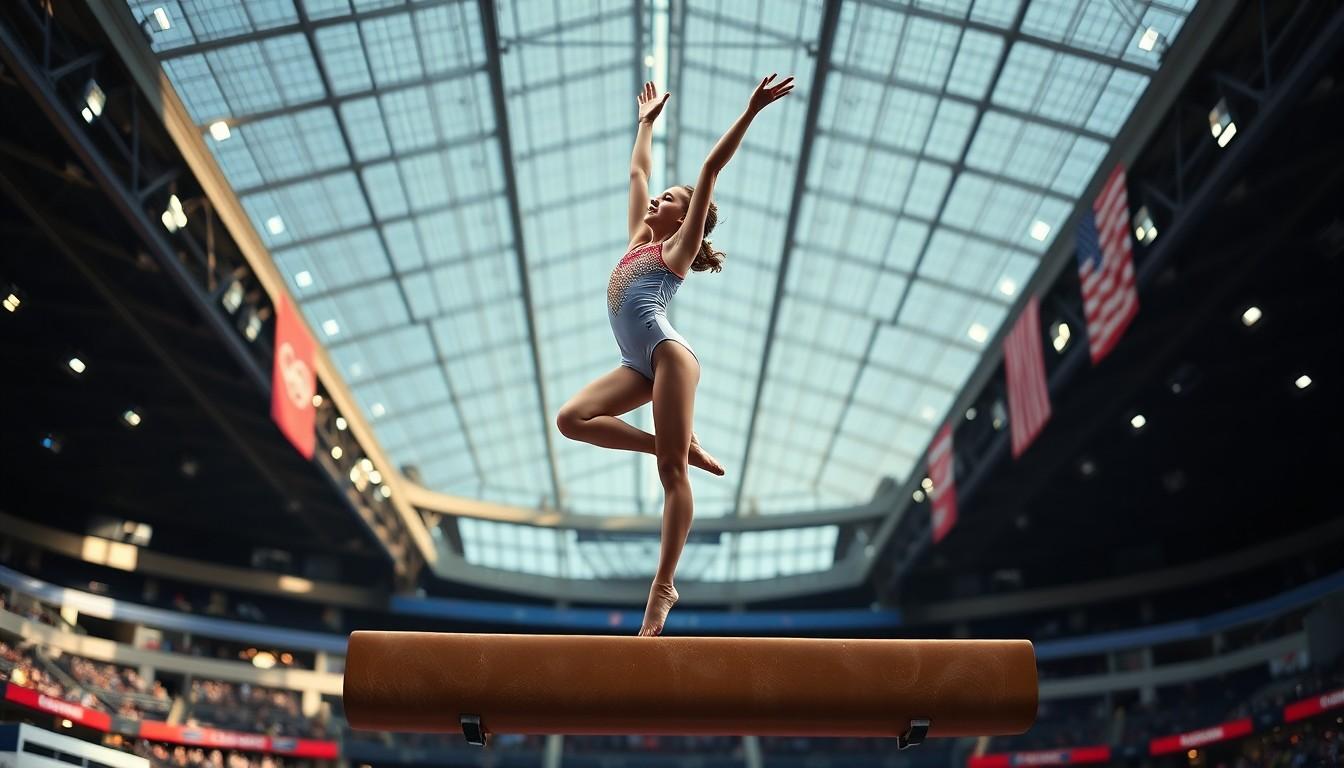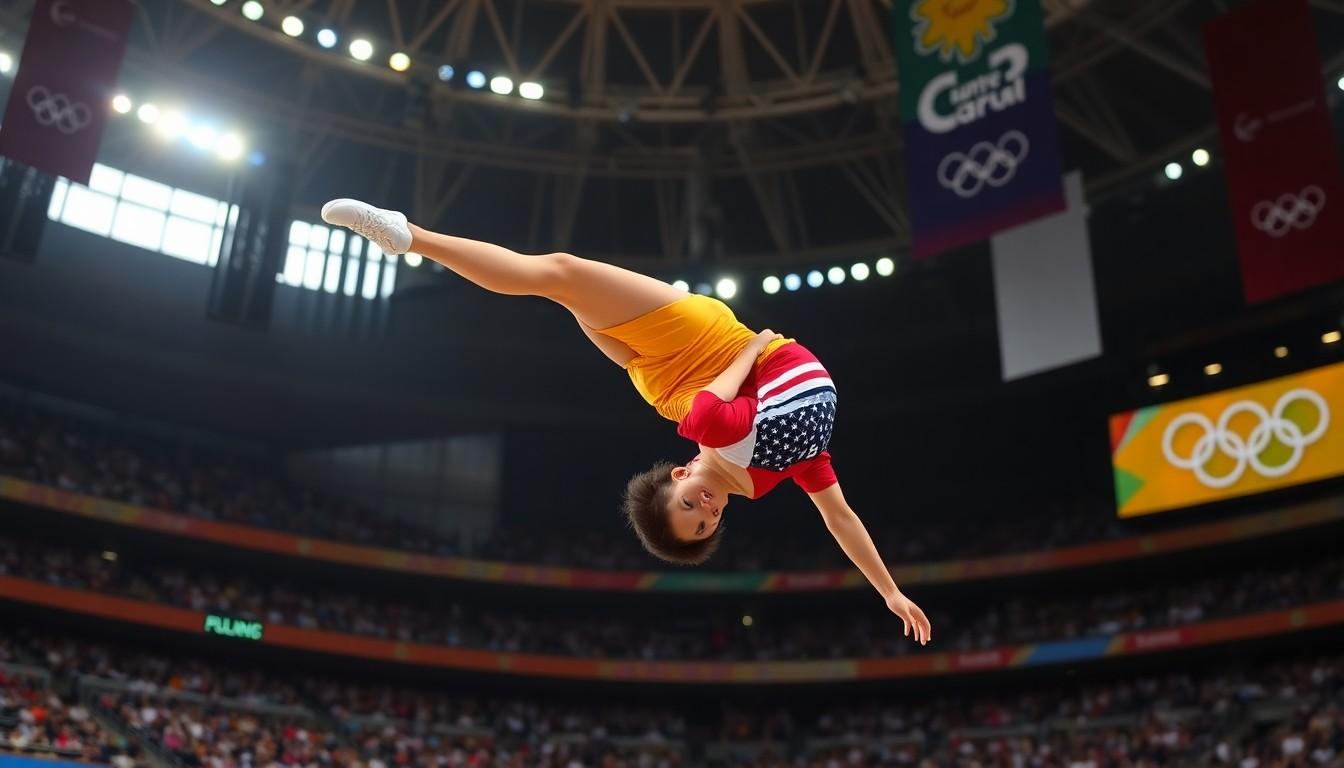Imagine standing on the world’s biggest stage, surrounded by the roar of thousands, and you’re barely old enough to ride a bike without training wheels. That’s the reality for the youngest Olympic athlete, who dazzles spectators with raw talent and a dash of youthful audacity. While most kids are busy perfecting their video game skills, this young prodigy is flipping, swimming, or sprinting their way into history.
Youngest Olympic Athlete
Young Olympic athletes exemplify exceptional talent and discipline at an early age. Prominent figures include Marjorie Gestring, who competed in diving at just 13 years old in 1936. Another notable example is Nadia Comăneci, achieving international fame at 14 during the 1976 Montreal Olympics, winning three gold medals.
In recent years, athletes such as Tom Daley and Chloe Kim have also made their mark as young competitors. Daley became a diving champion at 14 during the 2008 Beijing Olympics, while Kim earned a snowboarding gold medal at 17 in the 2018 Pyeongchang Games. These athletes inspire others with their skills and dedication.
Participation in the Olympics offers substantial opportunities for young athletes. They can showcase their abilities on a global stage, representing their countries alongside seasoned competitors. The experiences gained often propel their careers, leading to endorsements and increased popularity in their respective sports.
Various reasons contribute to the increasing number of young athletes at the Olympics. Enhanced training programs and better access to resources allow them to develop skills early. Sports have also become more accessible, encouraging participation from a wider audience. This trend explains why younger athletes break records and create history in many disciplines.
The commitment these young athletes display often sets them apart in competitions. Devotion to training and competition provides valuable life skills such as teamwork, resilience, and time management. Many young Olympians, through their efforts, illustrate what determination and hard work can accomplish in any field.
Notable Youngest Olympic Athletes Through History

Many extraordinary athletes have appeared at a young age in Olympic history. These individuals often change the landscape of their respective sports.
Historical Context
Marjorie Gestring holds the record as the youngest athlete to compete in the Olympics. She dove at 13 during the 1936 Berlin Games, marking a significant moment in sports history. Nadia Comăneci captured attention at 14 during the 1976 Montreal Olympics. Winning three gold medals, she set a new standard in gymnastics with her perfect scores. Lidiya Skoblikova, a speed skater, garnered fame after achieving five gold medals at the 1964 Innsbruck Olympics. These early appearances by young athletes showcased their exceptional talent, inspiring future generations.
Recent Examples
Tom Daley made headlines at 14 for his performance in diving at the 2008 Beijing Olympics. His achievements paved the way for a successful career, including Olympic gold in 2012. Chloe Kim, who won a gold medal in snowboarding at 17 during the 2018 Pyeongchang Games, exemplifies the rise of young talent. Her dynamic style and impressive skills captivated audiences worldwide. Other athletes like Kyle Snyder, a wrestling champion at 20 in the 2016 Rio Olympics, continue to carry the torch for younger competitors. Each of these athletes demonstrated exceptional determination and skill, further elevating the presence of youth in the Olympic arena.
Impact of Age on Performance
Age influences athletic performance in various ways. Young athletes often exhibit unique physical capabilities, allowing them to excel in their chosen sports.
Physical Capabilities
Youthful bodies typically recover faster from training, enhancing their ability to adapt to rigorous workouts. Muscles in young athletes often respond positively to training, leading to quicker improvements in strength and agility. Flexibility plays a crucial role as well; younger competitors generally possess greater flexibility, which aids in executing complex movements. Notably, their energy levels can sustain intense activity with less fatigue compared to older athletes. Increased hormonal activity contributes to muscle growth, further boosting physical performance.
Mental Readiness
Mental readiness varies significantly among young competitors. While age impacts confidence and experience, many young athletes display remarkable focus under pressure. They may adapt quickly to competitive environments due to fewer preconceived notions about failure. Furthermore, the ability to learn from mistakes often propels young athletes toward success. Support from coaches and family enhances their psychological resilience, enabling them to perform at high levels despite the pressures of competition. Ultimately, a young athlete’s mental landscape can shape their on-field outcomes and overall trajectory.
Controversies Surrounding Youngest Athletes
Young athletes often spark debates about their participation and treatment in competitive sports environments. These discussions highlight the complex balance between achievement and well-being.
Ethical Considerations
Concerns about age restrictions within sports organizations arise frequently. Many argue that allowing children to compete at high levels exposes them to intense pressures. Coaches, sponsors, and federations often prioritize medals over the athlete’s well-being. The question of informed consent also surfaces, as young competitors may not fully grasp the implications of their commitments. Further scrutiny of training practices sheds light on potentially harmful methods that push these athletes beyond healthy limits. Ethical standards are crucial in ensuring that young performers receive adequate support and protection throughout their sporting journeys.
Media Coverage
Media attention surrounding young athletes can be overwhelming. Coverage sometimes focuses more on age than on talent, prompting debates about fairness and maturity. Sensationalism can put unnecessary pressure on these athletes, affecting mental health and performance. Reporting on their achievements might overshadow personal growth experiences, leading to unrealistic expectations. Balanced journalism holds the key, as it should celebrate accomplishments while considering the emotional needs of young competitors. Ultimately, responsible media coverage can play a significant role in shaping public perception and fostering positive discussions about youth in sports.
The journey of the youngest Olympic athlete is a testament to the incredible potential of youth in sports. Their achievements not only inspire peers but also pave the way for future generations to dream big. As these young competitors continue to break barriers and set records, they redefine what’s possible at such a tender age.
While the spotlight can be overwhelming, the dedication and resilience displayed by these athletes highlight the importance of support systems in nurturing their talent. Balancing competition with well-being remains crucial to ensuring their long-term success. As the world watches, the stories of these young Olympians remind everyone that greatness knows no age limit.

